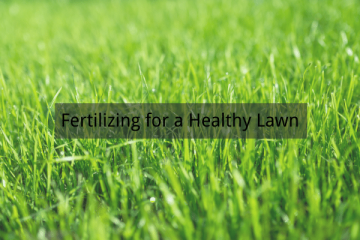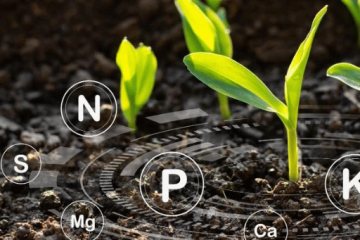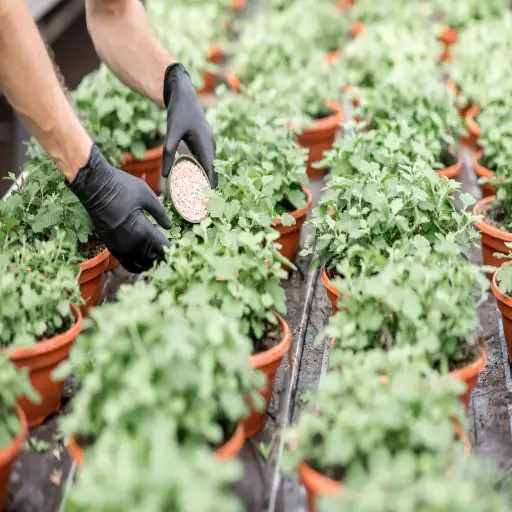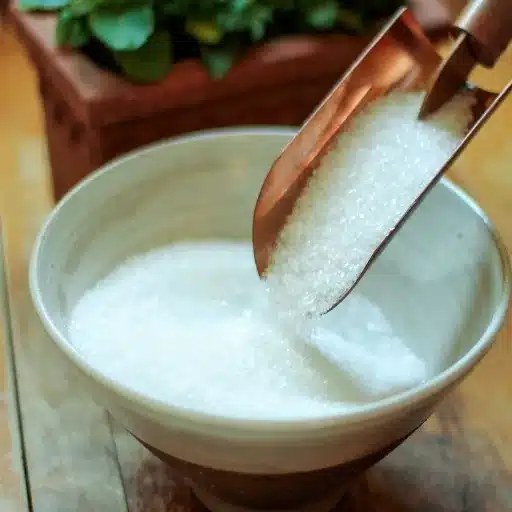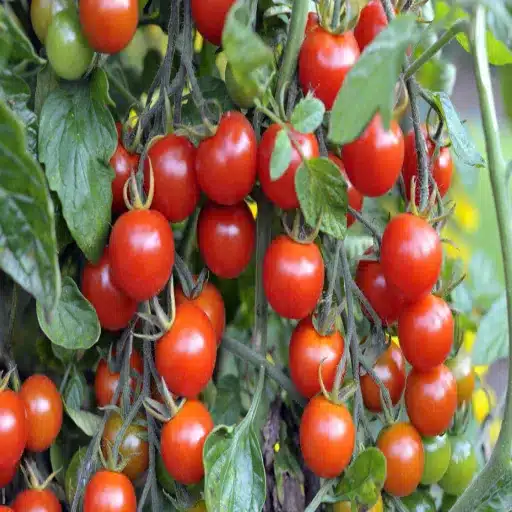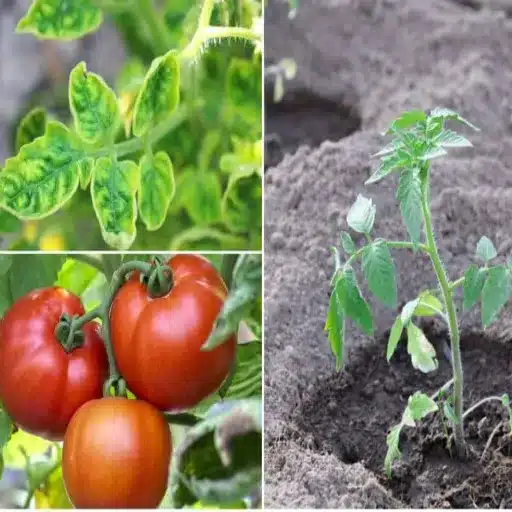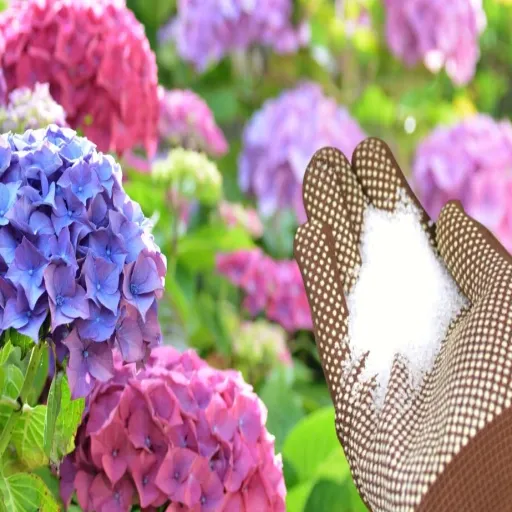For those seeking to enhance the health and productivity of their pepper plants, Epsom salt offers a simple yet highly effective solution rooted in science. Containing essential nutrients like magnesium and sulfur, this natural mineral compound plays a vital role in plant growth, supporting processes such as chlorophyll production and nutrient absorption. This article will explore how Epsom salt works, its benefits for pepper plants, and the proper application techniques to maximize its effectiveness. By understanding the science behind Epsom salt and learning the correct methods of use, gardeners can unlock the full potential of their pepper crops, achieving healthier plants and greater yields. Whether you’re a seasoned cultivator or a novice gardener, this guide provides the practical insights and technical knowledge needed to master this time-tested gardening staple.
What is Epsom salt and how does it benefit pepper plants?
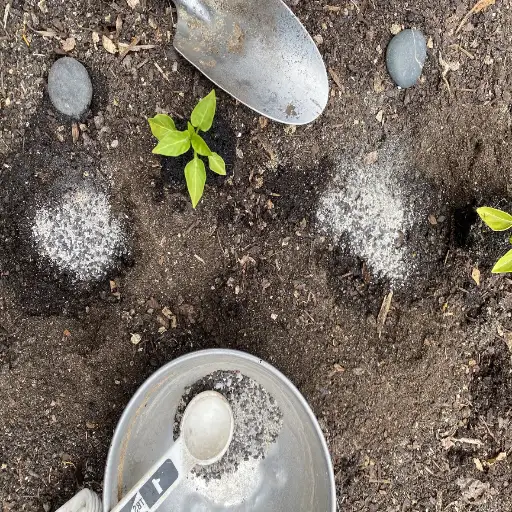
The role of magnesium and sulfur in plant growth
Both magnesium and sulfur serve as macronutrients vital for the growth and development of pepper plants. The magnesium atom at the center of chlorophyll molecules captures light energy. This activity is central to the photosynthesis process. Insufficient magnesium can lead to symptoms such as interveinal chlorosis where leaves are green and yellow tissue surrounds it. This phenomenon slows down growth and worsens yield.
Competitively, Sulfur constitutes amino acids, proteins, and enzymes within the framework of plant metabolism. Moreover, it further aids in vitamin synthesis and helps in the nitrogen utilization process. Thus, the uptake of other nutrients is done quite efficiently. The optimal conditions for maximum pepper plant performance include:
- Magnesium Concentration: Soil levels of magnesium must always be between 50-120 ppm as overly excessive levels of magnesium lead to greater nutrient imbalance with calcium and potassium.
- Sulfur Concentration: Ideal soil sulfur levels for pepper plants must always remain within ranges of 10-30 ppm so that plant development can occur without leading to toxicity.
Gardeners can easily address the physiological needs of magnesium and sulfur-deficient pepper plants through Epsom salt, allowing them to be as productive as needed.
How Epsom salt improves pepper plant health and fruit production
Magnesium sulfate (MgSO₄), otherwise known as Epsom salt, provides efficient solutions for sulfurs and magnesium deficiency in pepper plants, providing and optimally supporting growth and fruiting. Magnesium is the central atom of chlorophyll in a plant and is highly essential for photosynthesis while sulfur is important in amino acids and enzyme formations. When supplied as a fertilizer or sprayed on the leaves, Epsom salt burns di gaping holes into the leaves, allowing an almost instantaneous supply of vital nutrients.
- Magnesium (Mg): Epsom salt improves fuel magnesium levels to the recommended range of 1.5-3.0% of soil’s cation exchange capacity (CEC), and burns away any fuel supplementation deficiencies that stifle a plant’s ability to create chlorophyll and leaves.
- Sulfur (S): Epsom salt also helps in adjusting impoverished soils by maintaining soil sulfur concentration for peppers at 10-30ppm, supporting protein synthesis while narrowly avoiding toxicity.
In addition to this, foliar application (1 tablespoon to a gallon of water) allows for nutrient intake directly enhancing the metabolic and photosynthetic processes of pepper plants. By meeting these technical nutrient requirements, Epsom salt contributes to healthier plants, stronger stems, and an increase in fruit yield and quality.
How much Epsom salt should I use for pepper plants?
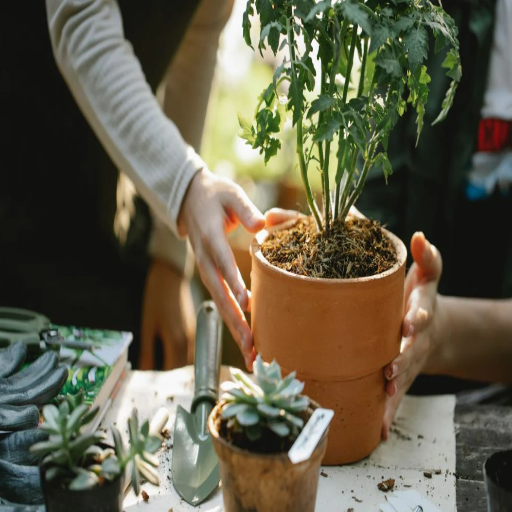
Recommended dosage for soil application
For Applied Horticulture, Epsom salts should be applied in 1-2 tablespoons per gallon concentration for pepper plants. Pour this solution around the base of the plant, as it should be evenly distributed to the soil. The best time to repeat this test is every 4-6 weeks within the appropriate growing conditions.
- Concentration: Magnesium is added without oversaturating the soil with 1-2 tablespoons per gallon concentration. When done, this could lead to inbalances or even nutrient toxicity. The key ingredient XYZ salt, Magnesium sulfate, is very soluble and can easily be infiltrated by the roots of plants.
- Frequency: Recurring every 4-6 weeks can ensure the appropriate nutrients are consumed without over-stocking them hence supporting the health of the soil.
- Application Area: The root zone is where the most efficient nutrient absorption is so special focus should be paid there.
These dosages and application intervals heavily rely on already existing guidelines for magnesium incorporation. Following this leads to enhanced pepper plant growth, subsequently leading to increased fruit yield.
Creating an Epsom salt foliar spray solution
Certain criteria ought to be met to provide the optimal Epsom salt foliar spray solution that boosts absorption while also eliminating the possibility of damaging the plants. Dissolve 1 tablespoon (15 grams) of Epsom Salt per gallon (3.8 liters) of water. This concentration delivers adequate magnesium and sulfate while decreasing the chances of foliage burn. Use warm water to speed up the dissolution.
Also, be sure to spray the solution in the morning or late afternoon. This helps in reducing evaporation and enables the plant to absorb the spray through the stomata that are open during this time. Pour the solution on both the upper and undersides of the leaves, especially for the newly developing leaves as these parts are the most active for nutrient uptake.
- Solution Concentration: 1 tablespoon (15 grams) per gallon (3.8 liters).
- Optimal Application Time: Morning or late afternoon.
- Application Focus: Entire surface of the leaves especially the young ones.
Reapply every two weeks or as directed by visual indicators of nutrient deficiencies such as yellowing between leaf veins. Additionally, check the foliar spray’s compatibility with the existing fertilization regime and adherence to the protocol to prevent excess magnesium application.
Frequency of Epsom salt application for pepper plants
With regards to magnesium supply for pepper plants, I suggest utilizing Epsom salt as both a foliar spray and an application in the soil every two weeks during the growing season. If magnesium deficiency is the concern, you might apply the foliar spray weekly and closely monitor plant response for signs of improvement.
- Dosage for Foliar Spray: 15 grams or 1 tablespoon per gallon of water.
- Dosage for Soil Amendment: 5 grams or 1 teaspoon for every square foot of soil.
- Application Timing: Spraying should be done during early morning or late afternoon to avoid leaf burn.
- Indicators for Deficiency: Stunted growth and yellowing between leaf veins (interveinal chlorosis).
Since high doses of Epsom salt could lead to nutrient imbalance and soil structure integrity issues, regularly maintaining moderated doses is important. For best results, Epsom salt should not be applied without a fertilization plan.
When is the best time to apply Epsom salt to pepper plants?
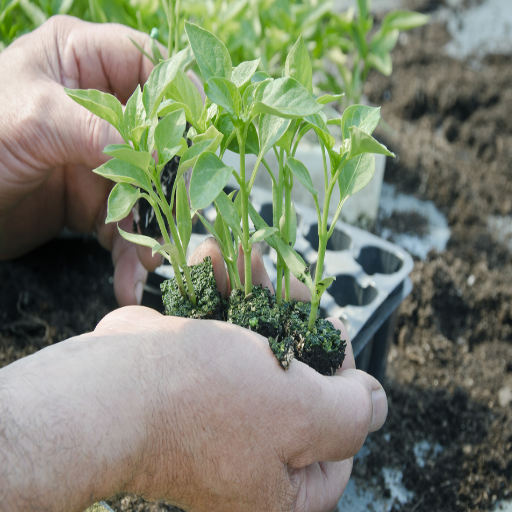
Applying Epsom salt during the growing season
I apply Epsom salt to my pepper plants in the flowering and fruit-setting stages. This is because magnesium, which is a crucial part of Epsom salt, is very important for nutrients and photosynthesis during fruiting.
- Dosage: I apply 1 tablespoon (15 grams) of Epsom salt which is dissolved in 1 gallon (3.8 liters) of water.
- Frequency: I apply as a foliar spray or root soak every 4 to 6 weeks.
- Timing: I prefer to do it at sunrise or sunset to avoid scorching and sunburning the leaves.
By adhering to these procedures, I help my pepper plants get as much magnesium as they need without excess application, which helps maintain balanced soil nutrients and vigorous growth of plants.
Using Epsom salt to address nutrient deficiencies
While not suitable for every scenario, Epsom salt is an effective means for correcting a nutrient deficit or lack of magnesium and sulfur, both of which are essential for a plant’s healthy growth. When my plants show signs of magnesium deficiency, such as interveinal chlorosis where the space between the veins is turning yellow while the veins remain green, I use an Epsom salt solution.
- Preparation: Add 1 tablespoon of Epsom salt to 1 gallon of water.
- Application: I use this as a foliar spray for immediate use or as a root soak for a prolonged period of nutrient delivery.
- Indicators for Use: Common indicators include stunted growth, little to no flowering, and yellowing leaves, particularly in magnesium-hypersensitive crops; for example, peppers, tomatoes, and roses.
- Frequency and Timing: To remedy deficiencies, I use the solution every 2 to 4 weeks targeting the early morning or late afternoon to minimize evaporation and maximize absorption while ensuring the plants are watered adequately to avoid stress.
These guidelines ensure that the plants are well-fed without overdoing it. Magnesium sulfate has a high solubility coupled with non-toxic properties, so when used in moderation, it is more than efficient.
Can I use Epsom salt on other garden plants besides peppers?
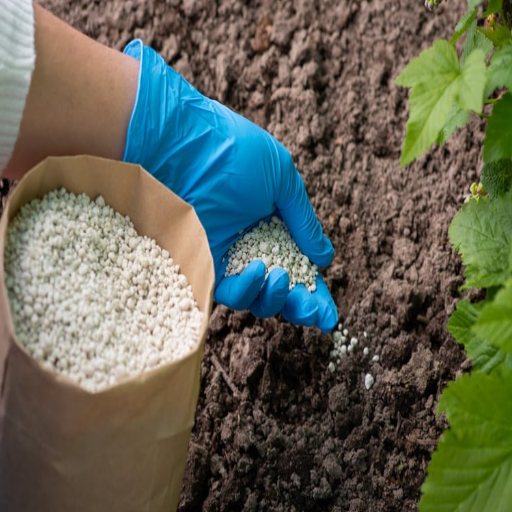
Epsom salt benefits for tomato plants
Certainly, Epsom salt can be very useful in aiding tomato plants’ growth because it contains magnesium and sulfate. Magnesium allows for chlorophyll production as well as enzyme activity which are both important for photosynthesis. Sulfur, on the other hand, plays an important role in building proteins and increasing the health of the plant in general.
- Dosage: For tomato plants, I normally mix one tablespoon of Epsom salt with a gallon of water. This mix is used as a spray or poured around the base of the plant as a soil drench.
- Frequency: Optimal application in the growing season starts at the seedling stage. It is best to apply every two to four weeks to reap maximum benefits.
- Application Method: I usually apply it as a foliar spray, so the leaves, especially the undersides, are well coated. I do this early in the morning or the late afternoon so that the leaves can absorb the solution well and not get burnt by the sun. For application to soil, I do it towards the root zone without flooding the area.
These specific intervals guarantee that the plants are supplied with the necessary magnesium and sulfate to enhance growth. This in turn leads to tomato plants with healthier growth, and significantly more fruit.
Other vegetables and flowers that respond well to Epsom salt
A variety of flowers and vegetables are greatly benefited by Epsom salt because of its magnesium and sulfur, which are important for the various processes that occur in a plant’s body.
- Vegetables: Crops like peppers, cucumbers, and leafy greens such as spinach and lettuce grow and yield better. For these crops, I use Epsom salt during the active growing phase. I add 1 tablespoon of Epsom salt to 1 gallon of water, give it a good shake until the salt is dissolved, and then foliar spray it every 2-4 weeks. This guarantees that there’s sufficient uptake of magnesium which is critical for i photosynthesis and chlorophyll production.
- Flowers: Roses, petunias, and gardenias are also responsive to the supplementation of magnesium. I use a similar foliar spray or sprinkle 1 tablespoon of Epsom salt around the base of the plants once every month. This makes the blooms greater in size and color as well as making the plant vigorous in bloom.
Monitoring the plant’s physical responses allows me to ensure that the plant benefits from Epsom salt without worrying too much about excess salinity or nutrient antagonism.
Are there any risks or precautions when using Epsom salt in the garden?
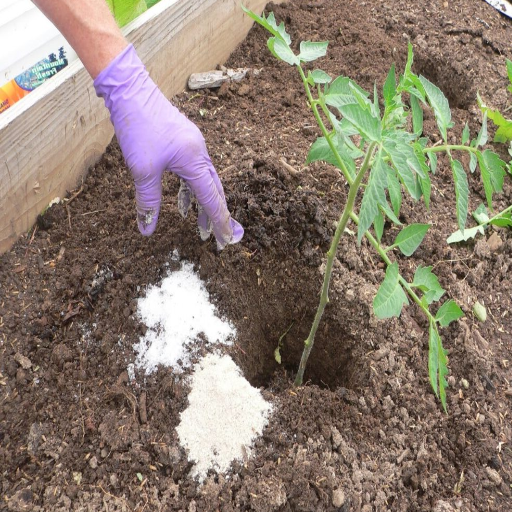
Potential overuse and soil imbalance concerns
Excessive use of Epsom salt in a garden or a yard can offset the nutrients of the soil by increasing magnesium levels too high to where it makes it difficult for calcium and potassium nutrients to be obtained. This can rather restrain plant growth.
- Concentration Restriction: When doing foliar sprays or ground applications, I use no more than 1 tablespoon of Epsom salt per gallon of water. Higher amounts during soil applications may cause a salt build-up that is harmful to sensitive plants.
- Application Interval: Foliar sprays are applied every 2 to 4 weeks during the active growing phase for vegetables and flowers. Similar to soil applications where amendments are limited to once every 4 to 6 weeks. This way, magnesium does not accumulate in excess.
- Recognition: Monitoring Epsom salt magnesium toxicity by regularly observing for outward signs such as plant wilting that is nutrient competing or yellowing leaves, which are a result of plant magnesium deficiency.
Epsom salt poses and makes for risk while overused in gardening, one sought after for its positive plants, therefore giving out strict observation and guidelines guarantees a safe gardening practice.
Combining Epsom salt with other fertilizers
Combining Epsom salt with other fertilizers can be highly beneficial when done correctly, as it complements the nutritional profile of many common fertilizers. I ensure compatibility and efficacy by following these technical parameters:
- Compatibility Test: Before mixing, I conduct a small-scale test to verify that the fertilizers do not chemically react, as incompatibilities might reduce their effectiveness or harm plants.
- Proportional Mixing: I carefully calculate the overall nutrient balance, ensuring that the addition of magnesium from Epsom salt does not disrupt the nitrogen, phosphorus, and potassium (NPK) ratios essential for plant growth.
- Dilution Ratios: When combining with liquid fertilizers, I adhere to the recommended dilution rates for each product, ensuring that the total concentration remains within safe limits for plants.
- Timing of Application: I never apply mixed fertilizers in high temperatures or direct sunlight, as this increases the risk of leaf burn. Instead, I apply them in the early morning or late afternoon.
By adhering to these parameters, I can effectively integrate Epsom salt with other fertilizers, enhancing plant growth while avoiding potential adverse effects. Regular monitoring of plant responses and soil conditions further ensures the success of this approach.
Reference sources
Frequently Asked Questions (FAQs)
Q: What is Epsom salt for plants and how does it benefit pepper plants?
A: Epsom salt for plants is a natural mineral compound composed of magnesium and sulfur. It can help pepper plants by promoting chlorophyll production, improving nutrient absorption, and enhancing overall plant growth. Adding Epsom salt can boost pepper yield and improve the plant’s overall health.
Q: How do I apply Epsom salt to my pepper plants?
A: To add Epsom salt to your pepper plants, dissolve 1-2 tablespoons of Epsom salt in a gallon of water and apply it as a foliar spray or soil drench once a month. Alternatively, you can sprinkle 1 tablespoon of ultra Epsom salt per foot of plant height around the base of the plant and water it in.
Q: Can I use Epsom salt for tomatoes and peppers together?
A: Yes, Epsom salt for tomatoes and peppers can be used together as both plants benefit from the additional magnesium and sulfur. Apply the same solution of 1-2 tablespoons of Epsom salt per gallon of water to both tomato and pepper plants for optimal results.
Q: How often should I apply Epsom salt to my pepper plants?
A: For most pepper plants, applying Epsom salt once a month during the growing season is sufficient. However, if your soil is particularly deficient in magnesium, you may need to apply it every two weeks. Always monitor your plants for signs of overuse or nutrient imbalance.
Q: Are there any plants that don’t like Epsom salt?
A: While many plants benefit from Epsom salt, some plants don’t like excessive amounts. Plants that prefer acidic soil, such as azaleas and rhododendrons, may not respond well to Epsom salt. Additionally, plants that are already growing in magnesium-rich soil may not need additional Epsom salt.
Q: Can Epsom salt help with blossom end rot in pepper plants?
A: Yes, Epsom salt can help prevent blossom end rot in pepper plants. This condition is often caused by calcium deficiency, but adding Epsom salt can improve the plant’s ability to absorb calcium from the soil, thus reducing the likelihood of blossom end rot.
Q: Is Epsom salt safe for organic gardening?
A: Epsom salt is a natural mineral compound and is generally considered safe for organic gardening. It doesn’t build up in the soil or harm beneficial microorganisms. However, always check with your local organic certification body to ensure it meets their specific standards.
Q: Can I use Epsom salt on other plants besides peppers and tomatoes?
A: Yes, Epsom salt can be used on various plants. Many plants like Epsom salt, including roses, potatoes, and leafy greens. However, it’s essential to research the specific needs of each plant type before applying Epsom salt, as some plants may not require additional magnesium or sulfur.

